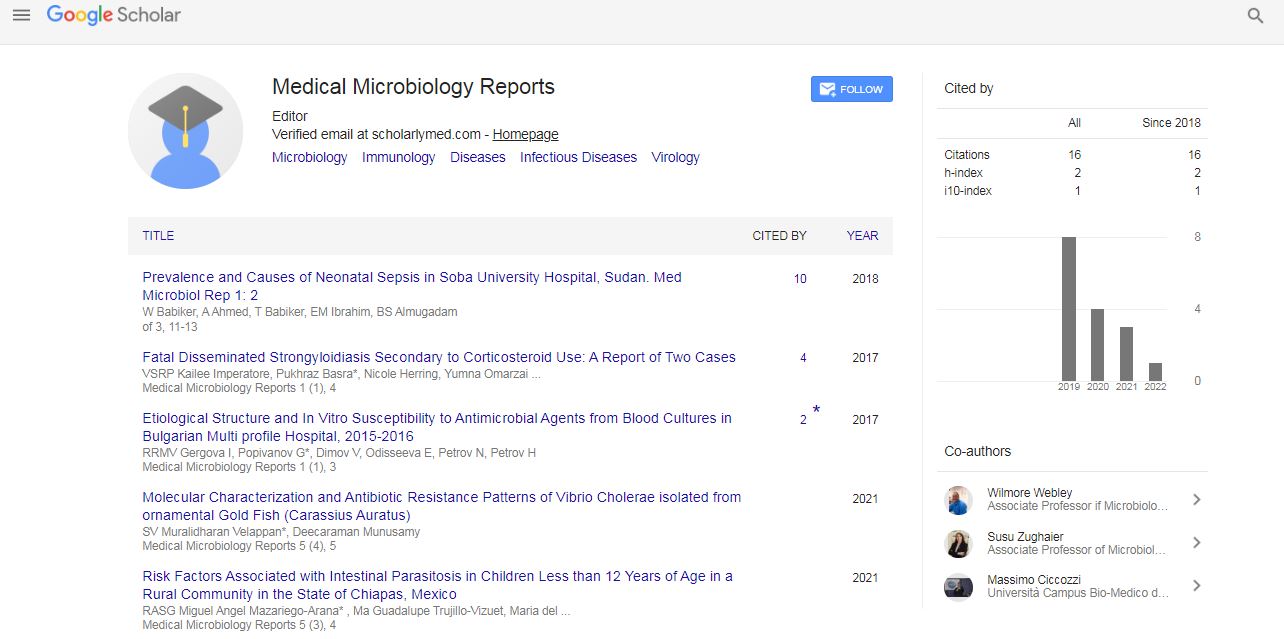Unravelling the anti-tubercular mode(s) of action of human antimicrobial RNases using a Mycobacteriainfected macrophage model
Ester Boix, Lu Lu, Javier Arranz-Trullen, Guillem Prats-Ejarque, David Pulido and Sanjib Bhakta
UAB, Spain
Birkbeck University of London, UK
: Med Microbiol Rep
Abstract
Tuberculosis (TB) is currently one of the priority health concerns worldwide. The emergence of multi-drug resistant TB-causing strains urges the development of novel antimycobacterial agents. Antimicrobial peptides have a key prominent role in the host self-defence weapons targeting Mycobacterium tuberculosis (Mtb). In this work, we have tested the antimycobacterial properties of the seven human canonical members of the RNaseA superfamily using the semi-solid agar-based spot culture growth inhibition (SPOTi) assay for the rapid but gold-standard screening of antimicrobial agents against Mtb. The RNases’ activity was assayed against M. aurum both In vitro and ex vivo using infected mouse RAW264.7 macrophages. Out of the seven RNases, only RNase3, RNase6 and RNase7 were effective against M. aurum. Consistent with extracellular results, the three RNases could internalize within macrophages and eradicate resident M. aurum at a low micromolar concentration range (5-10 Mm). Contribution of the enzymatic activity was discarded by the comparison of the RNases wild-type form with their respective active site mutants. Complementarily, screening of the seven 1-45mer N-terminal derived peptides revealed that only the RN3, RN6 and RN7 peptides are active against M. aurum. Following, we investigated the protein antimycobacterial mechanism of action. Interestingly, out of the seven screened RNases, RNase3 and RNase6 induced the macrophage autophagy pathway. Specific blockage of the autophagosome formation and maturation reduced the protein’s ability to eradicate the infection. Further analysis highlighted that the RNase autophagic activity is unrelated with its enzymatic action. Besides, both RNases agglutinate mycobacteria, consistent with their unique aggregationprone properties. Interestingly, we found that the M. aurum infection of human THP1 macrophages modulates the expression of both RNase3 and RNase6, suggesting a role in vivo. Overall, our data highlight an underlying role of human antimicrobial RNases as effective antitubercular agents through a multi-faceted mechanism of action and warrant novel therapeutic applications.
Biography
Ester Boix is leading the research group on “Human host defence RNases” at the Universitat Autonoma de Barcelona, Spain. She was awarded in 2002 as a Ramon y Cajal senior researcher and is Full Professorship accredited since 2016. She has published more than 70 papers in peer-review journals, mostly as a corresponding author. Her main research interests are focus on the mechanism of action of human antimicrobial RNases, as promising proteins for drug design. Her research group is pioneer in the development of expression protocols for recombinant RNases, first report of human RNases structural studies by X-ray crystallography and identification of RNases host defence properties. Latest works are based on structural- functional studies of antimicrobial RNases towards the identification of functional domains applied to the design of novel antibiotic agents to combat bacterial resistance.
E-mail: Ester.Boix@uab.cat
 Spanish
Spanish  Chinese
Chinese  Russian
Russian  German
German  French
French  Japanese
Japanese  Portuguese
Portuguese  Hindi
Hindi 
